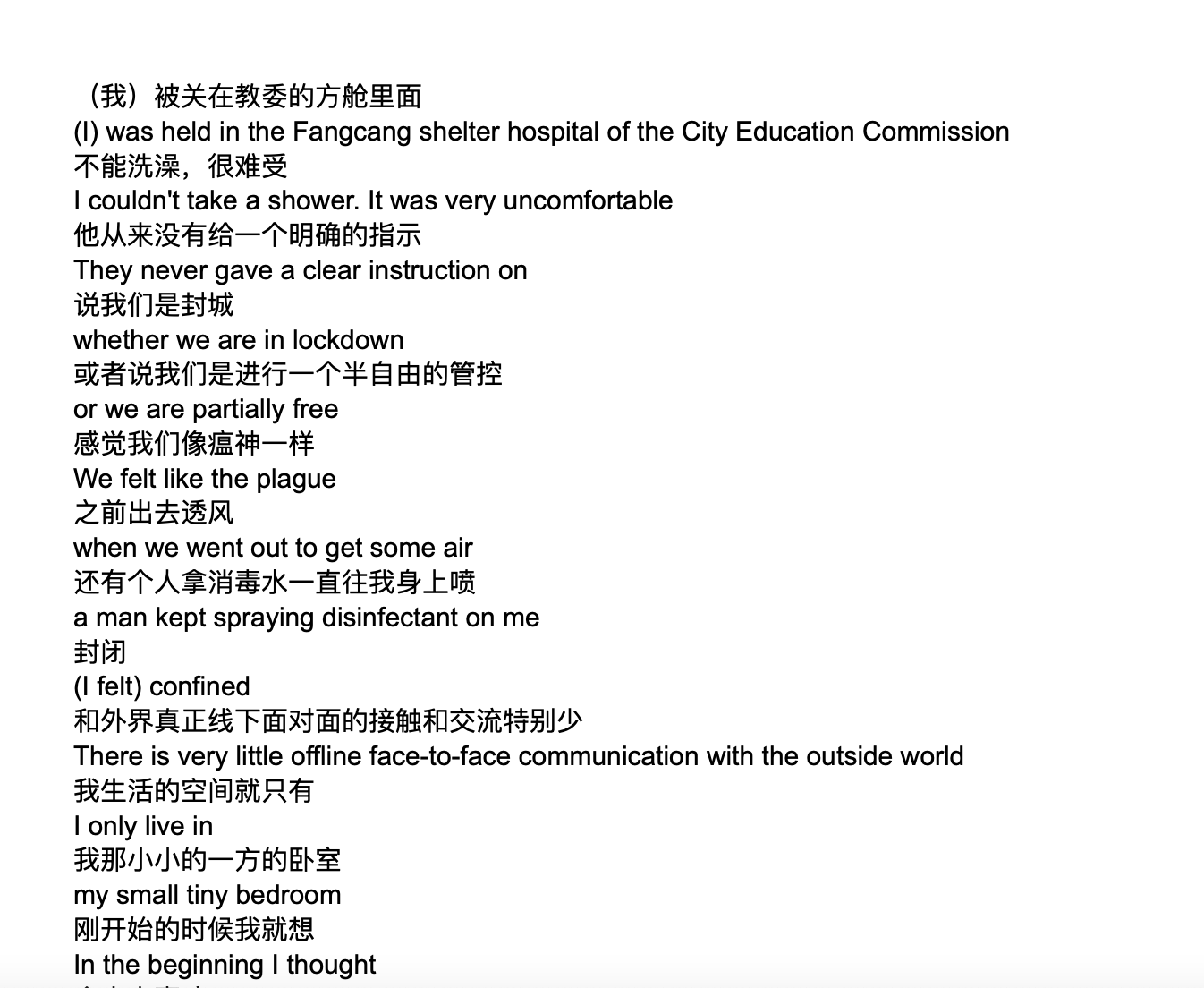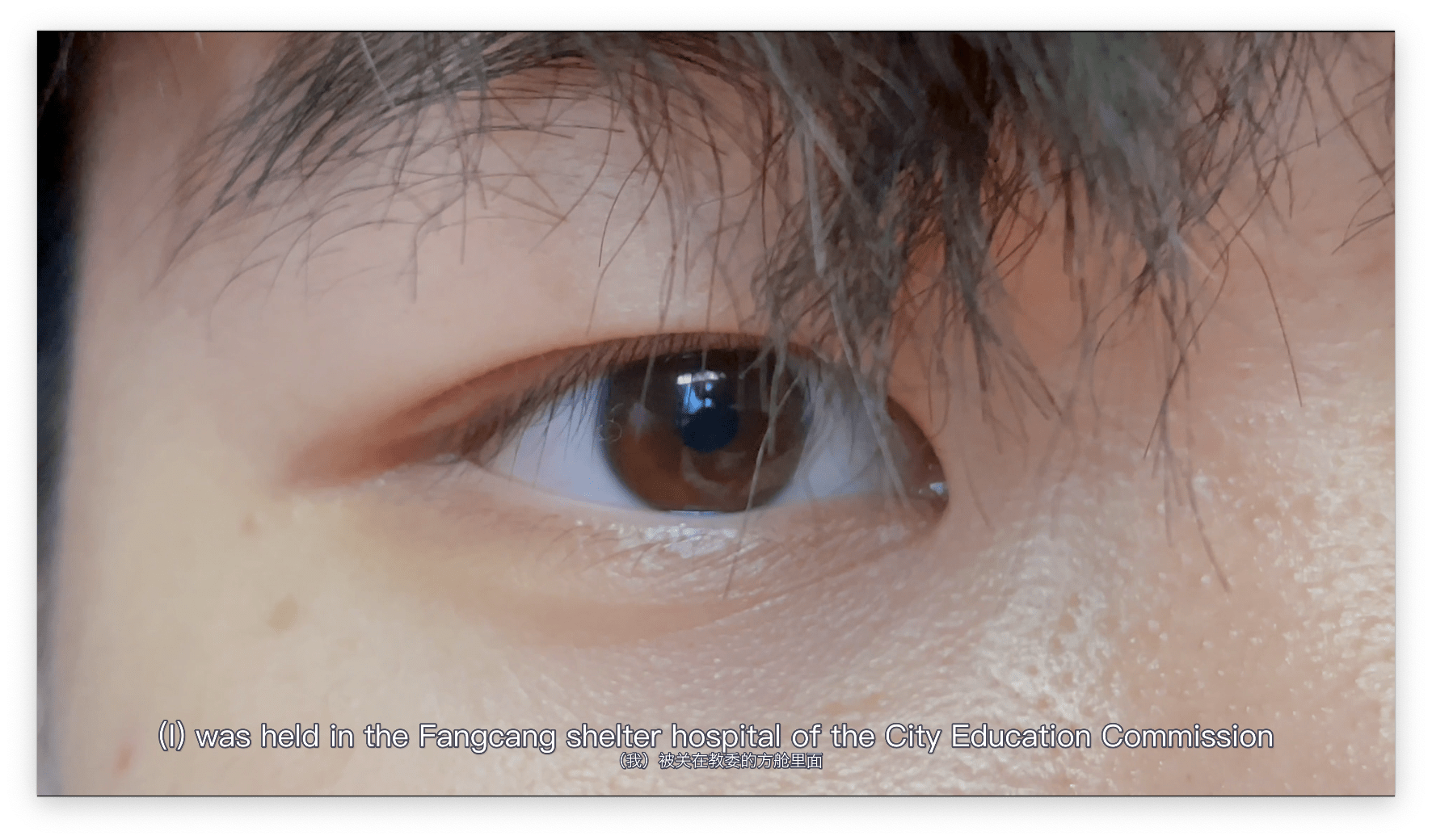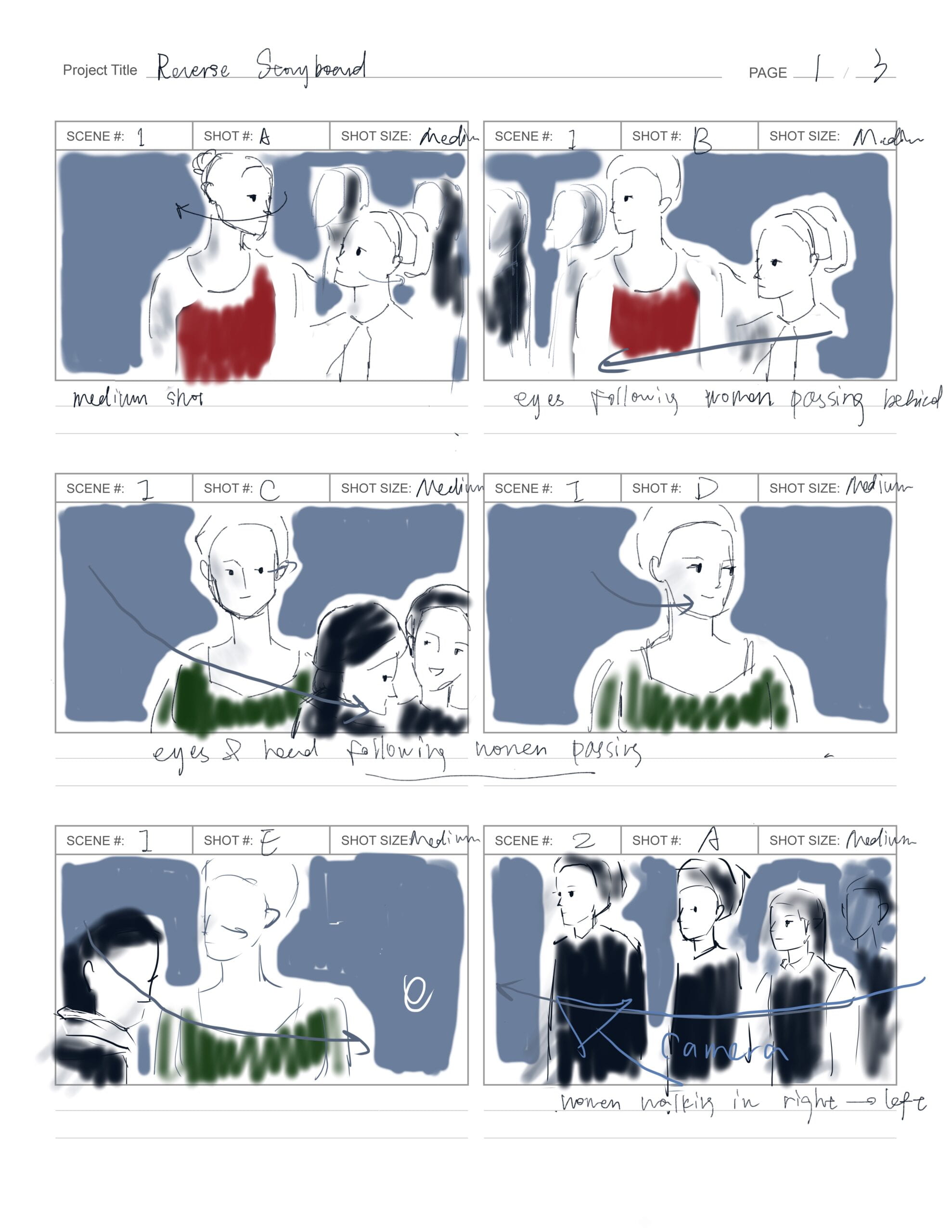Concept & Story

The project is centered around the topic of surveillance. By promoting the project, we’d like to reflect on our lives under strict surveillance, especially when the conflicts have been intensified after the pandemic outbreak in Shanghai.
In the voice over part of the video, we’d like to interview people around us in Shanghai, about their experiences and feelings during the lockdown. And by composing their voices, we’re reproducing the process of starting and heating up a discussion, until it’s wiped out under censorship. We’ll focus specifically on how people’s voices are moderated and guided under surveillance. To incorporate the idea of “visual metaphor”, as well as concerning our limited shooting condition, we decided to film people’s eyes in represent of the window where people observe, reflect and observe. And we want the eyes footage edited in pace with the voice over part to make our concept clear. By doing so, we want to explore the boundary of surveillance and free speech in the video. The shape of eyes also assembles number 0 in “Dynamic 0”, and that’t also how we decided on our project title. Regarding the sensitivity of the topic, we may want to edit the video in an objective way, and the color tune for the video might be colder.
Creation Process & Execution



That’s the storyboard I drew based on our idea. Since the storyboard has already been well developed, our shooting agenda basically followed the storyboard. Except that when we talked with Professor Ian, he raised his concern about whether the repeating footages of eyes may be a little boring. Taking his advise, Annika and me decided to add some other footages from the real-life news, as well as more effects like glitches to enrich the visuals and also better accomplish the concept. For the shooting part, I borrowed the lighting equipments from a friend to get better lightings, but at last we found ordinary lamps can also bring us great outcomes. And as we decided to use interviews as voice-over, I designed the interview questions. I wanted the questions to stay neutral and received the true feelings from people around us.

In the editing process, I mainly took on the voice-over part. Though I edited a rough audio clip before the video was shot, I still need to re-organized the audio again and again to match the videos. And since the voice-over part of our video is indispensable for concept and also very intense, the workload is quite heavy. The biggest problem I encountered when I’m editing was how to organize the flow of the voices. We used interview clips as our sources for audio, and we actually interviewed 20 or so students and each with 7 questions. The total length of our interview footages can be added up to approx. 2 hours. I struggled to select most valuable clips and make a 90s clips out of that. The work really has no short-cuts, and at last I spent a couple of nights listening and filtering voices, thinking about the best way to composite. Luckily it finally works out great.


To accomplish the video better, I also wrote and made the English and Chinese subtitles for the video.


Collaboration

Just like the sheet indicated, I took on the ideation, storyboard design, designing and conducting interviews, audio editing and some part of video editing. I spent a lot of energy and put a lot of effort into the project, so did Annika. I really appreciate her effort in filming and editing the video, which is in good pace and aesthetics. Without her effort, we couldn’t have achieved so far.
We also enjoyed the process of ideation and brainstorming together. We’ve always been in heated discussion about the concept, storyboard and execution throughout the production process, and I believe that our collision of ideas has made the project better. And Annika’s passion and hard-work would always encourage me even after the project was finished.
Aesthetics & Results
We’ve received many compliment for our video being very “powerful”, and I think mainly two aspect attribute to that.
One is the color tune of our video, which is generally cold, together with many disturbing glitching effects. I think these visual aesthetics fits our concept well, which indicate the coldness and harshness of surveillance.

Another one is the pace of our video, mainly led by the progression of audio clips. The audio composition is not only about piling up and deleting voices, but I also used a couple of sound effects to break the balance in people’s telling, creating a sense of shock as the mechanical eye came in. And by manipulating the amount and lengths of the sound clips, as well as inserting sound effects at the appropriate time, the audio can be gradually progressing, until it reached a culmination and ended with impressions. Voice-over combined with the visuals, the composition of the video becomes more accomplished and well-paced.




 The camera setting throughout the scene rarely moves, mostly it uses a medium shot, which put more emphasis on the emotions conveyer by the characters, as well as the witchy and powerful vibe stressed in the women’s A-Capella.
The camera setting throughout the scene rarely moves, mostly it uses a medium shot, which put more emphasis on the emotions conveyer by the characters, as well as the witchy and powerful vibe stressed in the women’s A-Capella.




